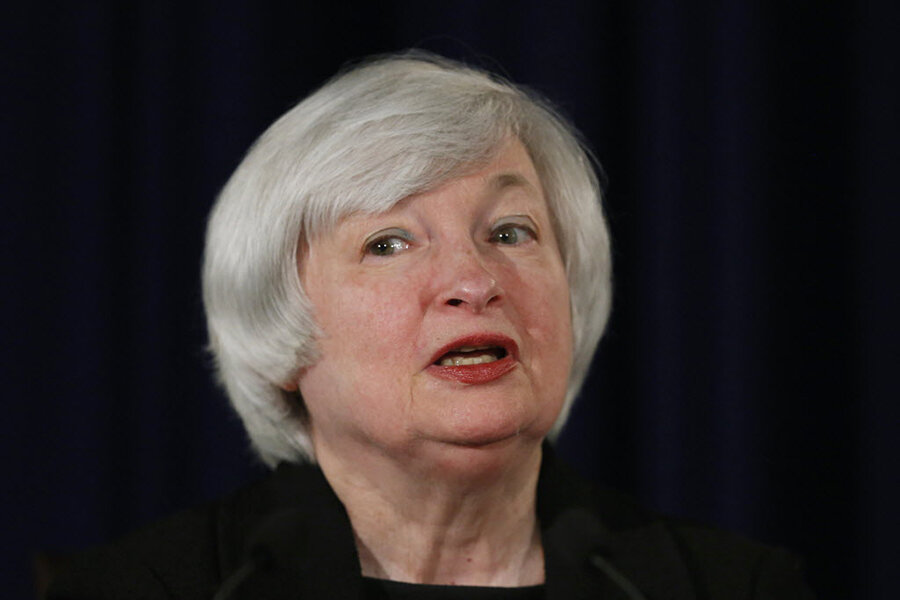Fed sees no interest rate hike until 2015, but it's getting closer
Loading...
| Washington
The day when the Federal Reserve boosts interest rates is drawing closer, even though that day is still a “considerable time” off, to use official Fed-speak.
That’s at least one way to read the modern-day smoke signals sent by the US central bank Wednesday.
Three months have passed since the Fed’s June meeting, yet its chart showing the timing of rate hikes anticipated by Fed policymakers hasn’t changed much: The expectations remain centered heavily in 2015.
Many investors see the rate hike happening around the middle of 2015, and the Fed did nothing Wednesday to dissuade from such views. That calendar date is getting closer.
Some economists predict the Fed will start boosting rates as early as next March, while others say June or a bit later.
These are best guesses. The Fed doesn’t have a preset plan on the timing of a rate hike, but the smoke signals are important because they hint at the path of policies that have major impact on financial markets and the wider economy.
Fed policies of low interest rates have provided major fuel for America’s recovery from recession over the past five years. That recovery is still incomplete, but the policymakers are also mindful that their job includes watching against inflation and financial bubbles, not just promoting a full-employment economy.
The Fed is no longer taking a “full stimulus ahead” approach.
Policymakers are optimistic about the economy, albeit slightly less bullish about growth than they were in June. Their consensus forecast still has gross domestic product rising by more than 2.5 percent for 2015 and 2016, but not exceeding 3 percent.
And they still don’t see inflation exceeding 2 percent – although it may come close to matching that Fed-set target.
At the same time, two of 10 voting members of the policy committee are now counted as “dissenting votes,” seeking to position the Fed for a possible earlier rate hike than markets now expect. Richard Fisher of the Dallas Fed branch joined Charles Plosser of the Philadelphia Fed, who dissented at the June meeting.
A “dot plot” showing the current expectations of committee members on interest rates also showed a change if anything in the direction of higher rates. Each dot represents the views of one committee member, and the median dot suggests the Fed’s rate would reach about 1.25 percent by the end of 2015 and about twice that level a year later. Currently, the rate is at a near-zero level.
The committee also forecasts slightly more improvement in the unemployment rate than it did in June – a factor that may be behind the upward shift in the Fed dots.
For the first time, the dot-plot chart gives the public a glimpse of Fed forecasts for 2017. Policymakers expect by then to see both unemployment and interest rates back to long-run norms.
At a press conference after the statement was released, Fed Chair Janet Yellen said the decision on a rate hike will be driven by what happens in the economy, not by a calendar-driven parsing of the words “considerable time.”
Weakness in Europe or China, for example, could dampen the US economic outlook.
But unless something changes, the positions of those policymaker dots in 2015 are getting closer.








